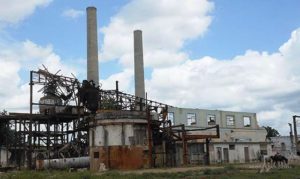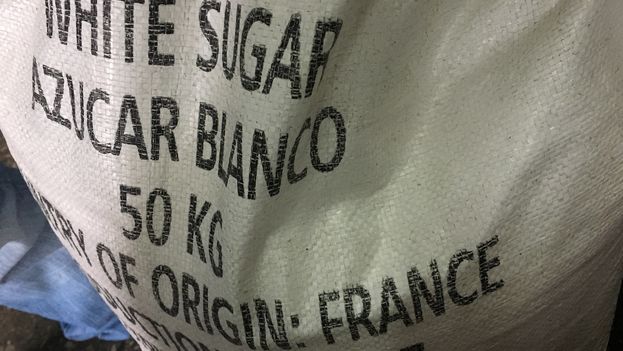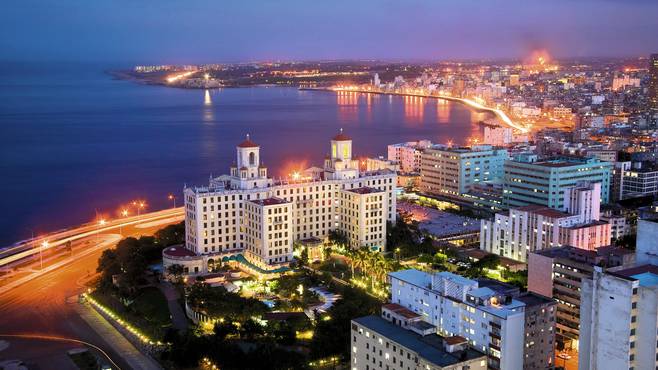 (OPINION) CUBA ALWAYS WAS AMONG THE WORLD SUGAR LEADERS, TODAY IMPORTS THE PRODUCT.
(OPINION) CUBA ALWAYS WAS AMONG THE WORLD SUGAR LEADERS, TODAY IMPORTS THE PRODUCT.
To know what has stopped working in the current sugar campaigns, we must make a little history.
Since 1911, in republican Cuba, sugar production fluctuated between 5 and 7 million tons. They were harvests that rarely exceeded 3 months. The productivity per hectare was among the best on the planet. At the level of Hawaii or any sugar power of then. The industry was a jewel. Its efficiency was among those of world leaders.
With the arrival of Fidel in power in 1959, the slow decline began.
In 2002, under Fidel Castro, a process of dismantling dozens of plants began, arguing that the fall in product prices in the international market made the industry unsustainable. In 2011 the Sugar Ministry was eliminated and its functions were assumed by Azcuba.
Three decades after that offensive, 64% of the plants remain closed, their workers were relocated to other positions and most of the sugarcane plantations have been used for other crops.
In the 2017-2018 harvest, the Island produced just over one million tons of raw sugar, far from the 1.6 million that the authorities of the sector had proposed. “What did not allow compliance with what was planned,” said the president of the Azcuba state group, Julio García.
Cuba has a high consumption of sugar and some 700,000 tons per year are needed to satisfy the demand of the rationed market, local industries and the sector on its own. The Island has a commercial agreement with China to sell 400,000 tons each year, but this year the production did not reach to cover domestic consumption and exports.
The Cuban sugar industry was for decades the flagship of the island’s productions and led exports. In 1991, 8 million tons were reached just before the collapse of the Soviet Union sank the Cuban economy and caused special damage in this sector.
Currently, sugar production has lagged behind, far behind tourism, remittances from emigrants and the sale of professional services, mainly health, that have displaced the island’s old economic locomotive.
IMPORTING SUGAR FROM FRANCE.
The sugar that this September of 2018 has been distributed by the basic basket of the rationed market does not come from the Cuban fields but from the distant France. The bad performance of the last harvest forced the Government of the Island to import a product that, until a few years ago, was a symbol of the country.
In impeccable white sacks, the sugar that has reached the Havana wineries is causing satisfaction among consumers for its quality and cleanliness. “It’s thin, it’s not damp and it does not have any dirt,” describes the product Norberto, a winemaker from La Timba neighborhood, near the Plaza de la Revolución.
“We have had sugar from Brazil but this is the first time that comes from France,” adds the state employee. An information that confirms to this newspaper a worker of the Azucarero Business Group (Azcuba) that prefers anonymity. “We had to buy French sugar because most of the national harvest we have committed to international buyers,” he says.
In the previous harvest, only 54 mills were crushed and the rains affected the harvest that had to end earlier than expected due to the intense spring rains, which made the harvesting of the cane more difficult in the fields and contributed to a rapid deterioration of the product.
 (OPINIÓN) CUBA SIEMPRE ESTUVO ENTRE LOS LÍDERES DEL AZÚCAR MUNDIALES, HOY IMPORTA EL PRODUCTO.
(OPINIÓN) CUBA SIEMPRE ESTUVO ENTRE LOS LÍDERES DEL AZÚCAR MUNDIALES, HOY IMPORTA EL PRODUCTO.
Para conocer qué ha dejado de funcionar en las actuales campañas azucareras, hay que hacer un poco de historia.
Desde 1911, en la Cuba republicana, la producción azucarera fluctuaba entre 5 y 7 millones de toneladas. Eran zafras que rara vez superaban los 3 meses. La productividad por hectáreas estaba entre las mejores del planeta. A nivel de Hawai o cualquier potencia azucarera de entonces. La industria era una joya. Su eficiencia estaba entre las de los líderes mundiales.
Con la llegada de Fidel al poder en 1959 comenzó el lento declive.
En 2002 y bajo el mandato de Fidel Castro se comenzó un proceso de desmantelamiento de decenas de centrales, bajo el argumento de que la caída de los precios del producto en el mercado internacional hacían insostenible la industria. En 2011 se eliminó el Ministerio del Azúcar y sus funciones fueron asumidas por Azcuba.
Tres lustros después de aquella ofensiva, el 64% de los centrales se mantienen cerrados, sus trabajadores fueron reubicados en otros puestos y la mayor parte de los cañaverales se ha destinado a otros cultivos.
En la zafra de 2017-2018 la Isla produjo poco más de un millón de toneladas de azúcar crudo, lejos de los 1,6 millones que las autoridades del sector se habían propuesto. “Lo que no permitió el cumplimiento de lo planificado”, precisó el presidente del grupo estatal Azcuba, Julio García.
Cuba tiene un elevado consumo de azúcar y se necesitan unas 700.000 toneladas anuales para satisfacer la demanda del mercado racionado, las industrias locales y el sector por cuenta propia. La Isla tiene un acuerdo comercial con China para venderle cada año 400.000 toneladas, pero este año la producción no alcanzó para cubrir el consumo interno y las exportaciones.
La industria azucarera cubana fue durante décadas el buque insignia de las producciones de la Isla y lideraba las exportaciones. En 1991 se alcanzaron 8 millones de toneladas justo antes de que el desplome de la Unión Soviética hundiera la economía cubana y causara un daño especial en este sector.
En la actualidad la producción azucarera ha quedado rezagada, muy por detrás del turismo, las remesas de los emigrados y la venta de servicios profesionales, fundamentalmente de salud, que han desplazado a la antigua locomotora económica de la Isla.
IMPORTANDO AZUCAR DE FRANCIA.
El azúcar que este mes de septiembre del 2018 se ha distribuido por la canasta básica del mercado racionado no proviene de los campos cubanos sino de la lejana Francia. El mal desempeño de la pasada zafra obligó al Gobierno de la Isla a importar un producto que, hasta hace pocos años, era símbolo del país.
En impecables sacos blancos, el azúcar que ha llegado a las bodegas habaneras está causando satisfacción entre los consumidores por su calidad y limpieza. “Es fina, no está húmeda y no tiene ninguna suciedad”, así describe el producto Norberto, un bodeguero de la barriada de La Timba, cercana a la Plaza de la Revolución.
“Hemos tenido azúcar de Brasil pero esta es la primera vez que nos llega desde Francia”, agrega el empleado estatal. Una información que confirma a este diario un trabajador del Grupo Empresarial Azucarero (Azcuba) que prefiere el anonimato. “Hemos tenido que comprar azúcar francesa porque la mayor parte de la zafra nacional la tenemos comprometida con compradores internacionales”, puntualiza.
En la zafra anterior solo molieron 54 centrales y las lluvias afectaron la cosecha que debió terminar antes de lo previsto debido a las intensas precipitaciones de la primavera, que hicieron más difícil el trabajo de recogida de la caña en los campos y contribuyeron a un rápido deterioro del producto.
Agencies/ 14ymedio/ Marcelo Hernández, La Habana/ Internet Photos/ Arnoldo Varona/ TheCubanHistory.com
THE CUBAN HISTORY, HOLLYWOOD.








